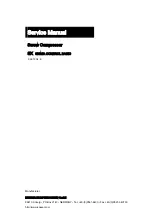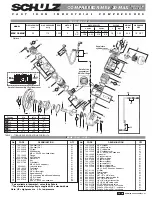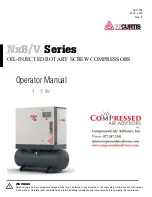
GAS COMPRESSORS / BOOSTERS
GAS & AIR MIXING SYSTEMS
AIR BLOWERS & VACUUM PUMPS
The Utile Engineering Co. Ltd.
Irthlingborough, Northamptonshire, NN9 5UG, ENGLAND
Telephone: + 44 (0) 1933 650216 Facsimile: + 44 (0) 1933 652738 Email: [email protected]
www.utileengineering.com
3
IC182
General
The normal routine of running the machine is very simple. If it is carried out strictly at all times, many years of trouble free
service can be expected.
We emphasise two points of paramount importance-
1. Filtration of incoming air of gas
2. Lubrication
If possible provide a logbook so that the operator can enter daily readings. After several months a record will show whether
the machine is performing as it did originally. If readings are to be taken the following are all that is required. Inlet and
outlet air temperatures, suction conditions and oil drip rate.
A typical layout for the log book is shown in the table below.
Machine Log Book
Date
Inlet Gas Temp.
Discharge Gas Temp.
Inlet Conditions
Oil Drip Rate.
Operating Principle
Rotary sliding vane compressors and vacuum pumps are multi-cell machines, which work on the displacement principle.
They provide a constant, low-pulsation supply of air or gas.
The machines have a cylindrical bored housing. The rotor, which is also cylindrical, is fitted eccentrically in the cylinder so
that a crescent-shaped working chamber is formed. Movable rotor vanes are fitted in the longitudinal grooves in the rotor;
centrifugal force and the force of the air or gas presses the blades against the cylinder-housing wall when the rotor turns.
The vanes divide the crescent-shaped working chamber into cells of different sizes. As the rotor turns, the cell volume on
the intake side increases, and the cell draws air in at low pressure, at which point is open to the intake delivery line. As the
rotor continues to turn, the cell is closed (see fig 1) and the volume of the cell decreases. This causes the enclosed air or
gas to be compressed (see fig 2) and forced out through discharge delivery line under atmospheric pressure.
The machine can only be run in one direction, which is indicated by an arrow on the cylinder. The direction of rotation must
not be reversed.
General
Operating Principle
Fig. 1
Discharge
Intake
Fig. 2
Discharge
Intake


































